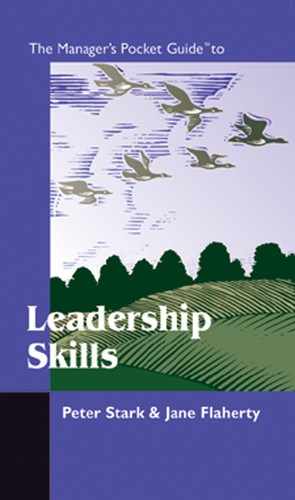Planning a Productive Meeting
,Step One: Creating the Agenda
After determining whether a meeting needs to be held, and if it does, what type, the next step is to begin the planning. Every meeting should have an agenda. An agenda sends participants the message that their time is valued enough to do prior planning. It also lets participants know ahead of time what they will be doing during the meeting. Participants then have an opportunity to prepare themselves for the meeting. They can make sure that they have all the data needed to make an informed contribution to the meeting. (To help you plan and conduct a productive meeting, a checklist is provided at the end of this chapter.)
An agenda should include the following:
1. Start time. Establish a start time and then begin right on time. Starting on time rewards those who are prompt and ready to start at the announced time. When you have a reputation for starting on time, people attending your meetings will show up on time!
2. Topics. The topics to be covered at the meeting should be listed next, in the sequence in which they will be discussed during the meeting. Be brief here, including only enough information for participants to be able to identify the subject.
3. Break time. If a meeting is scheduled to run more than 90 minutes, schedule a short break. When participants start their break, be very specific about the time you will resume. Start again promptly at the announced time. People will get the message that you value their time and intend to keep the meeting moving productively.
4. Summary. End every meeting with a short summary of the topics covered and the outcome. Although this activity doesn’t take long, it helps participants focus on the content of the meeting and reminds them that the meeting accomplished something.
5. Follow-up. After the summary, review participants’ future responsibilities. Whatever participants have agreed to contribute needs to be reviewed before the meeting adjourns, whether it be assuming responsibility for a task or gathering more information for a future meeting.
6. Adjournment time. Stick to your agenda. Work hard to keep the meeting progressing towards the established goals. End on time. As with starting on time, ending meetings on time will quickly build your reputation for being an organized leader with respect for others’ time.
Step Two: Selecting the Participants
Generally, when deciding who should participate, the smallest number of appropriate people is the best guideline to follow. If it is to be an informational meeting, the participants will include all those who need the information. On the other hand, if the meeting will have a problem-solving format, then you should consider the following criteria when you select participants. Participants attending problem-solving meetings should have:
1. Expertise in the problem. Select participants who have knowledge or technical expertise in the area that will be considered during the meeting.
2. Commitment. Participants should have a mutual interest in solving the problem, therefore they will be committed to the problem-solving process.
3. Diversity. When selecting participants, consider team members who have different facts, opinions, and feelings. They will contribute more creative solutions to complex problems.
4. Open-mindedness. Participants attending the meeting will have diverse opinions. However, they need to be able to listen to one another and openly consider solutions presented by others.
Step Three: Arranging the Facility
Adequate prior planning in selecting and setting up a meeting room will contribute significantly to conducting a productive meeting. Consider the size of the room in relation to the number of participants. Will there be enough room to comfortably accommodate participants and any required furnishings and audiovisual aids?
Check to see that the heating/cooling, lighting, and ventilation are adequate for the size of your group and the activities you have planned during the meeting.
Determine seating arrangements. Generally speaking, participants attending informational meetings can be seated facing forward so that they can maintain eye contact with the group leader. They may not need tables. Participants attending decision-making meetings should be seated so that they face one another. If participants are not all familiar with one another, have name tents for team members.
